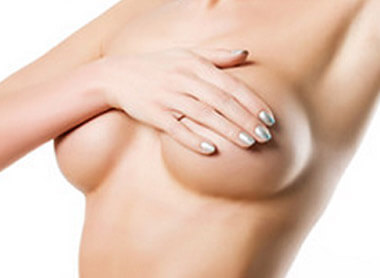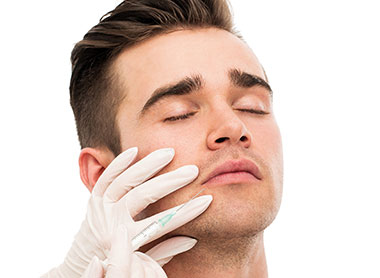But even a facelift itself, if carried out on the suitable individual, is likely to increase your self-confidence & self-esteem. The results of a properly performed facelift should last many years, but remember that the procedure cannot stop the ageing process. The clock can be set back, but you cannot stop it running. Nevertheless, we daresay that the delay in the ageing process in the facial & neck area attainable through a facelift, is sufficient for the patient to put ameliorate various social & personal pressures! Therefore it can be recommended as a solution to many signs of ageing that some people find undesirable.
- Face - introduction
- Eyelid Surgery
- Ear Reshaping Surgery - Otoplasty
- Face and Neck Lift
- Nose reshaping surgery
- Lip Augmentation
- Gallery
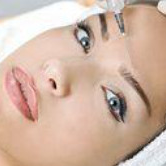
Face and Neck Lift
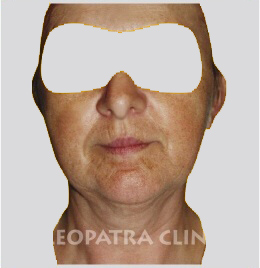

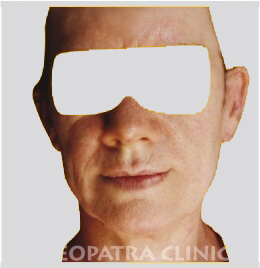
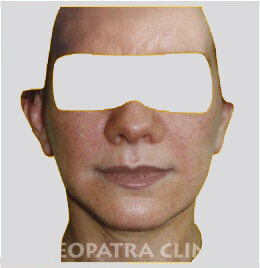
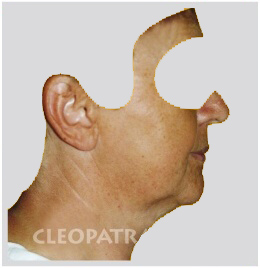
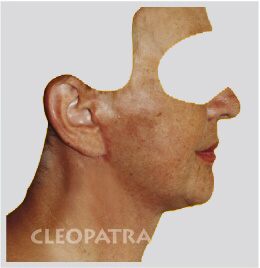
Gallery
Turning off and adjusting tissue drop and wrinkles including muscle shutdown
before the procedure
after the procedure


surgical shut off of the face and neck
before the procedure
after the procedure


before the procedure
after the procedure


surgical shut off of the face and neck
before the procedure
after the procedure
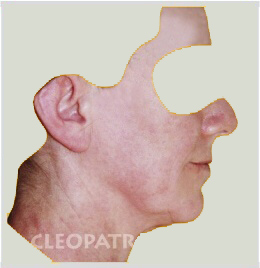
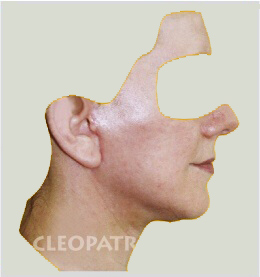
Introduction
Actor Burt Reynolds is said to have had one. Joan Rivers has had at least two…and there are some who say that maybe, just maybe, Michael Douglas had one. People who saw the film ‘Black Swan’, the ballet drama, in the cinemas, were left wondering if actress Barbara Hershey had had one too. We are talking…face-lifts.
As we get older, time, gravity, illnesses we’ve been through, smoking, long-standing exposure to the sun & solarium, stresses etc. begin to take their toll on a formerly smooth face. This is in terms of skin ageing, changes in pigmentation, creation of various skin formations & wrinkles. Add in loose underlying tissue & muscles, and aging can be a little unkind!
It doesn’t stop there: deep creases begin to form between the nose and mouth, the jawline becomes slack; folds & fat deposits start to appear around the neck. Cheeks sink down, eyebrows droop, multiple wrinkles appear around the mouth, forehead, face & neck. The angle between the jaw & neck disappears, and generally the quality & tension of the skin & underlying tissue gets worse.
A facelift is a surgical procedure that can reduce some of the most visible signs of the ageing process on the face & neck. In order to attain such results, the surgeon tightens the muscles under the skin & neck, removes loose sagging skin, and in some cases eliminates excess fat. If the ageing process shows in all parts of the face, it is advisable to correct subsequently even these imperfections by the means of eyelid, forehead & brow lift surgery. Also, it is possible to suture loose muscles under the chin, and very often perform double chin liposuction. For the best facelift result, later on it is desirable to complete the surgery by the external elimination of any remaining fine wrinkles. Such wrinkles are found around the eyes, between the eyebrows & potentially on the forehead, and Botox injections or other safe materials can be used to smooth-out very deep wrinkles.
In the event there are multiple criss-cross or cross-hatch wrinkles on the face (“Indian grandma”) or pigment spots, it is advisable to eliminate these signs of ageing process through the laser treatment (full-face laser) or fruit acids at the very end of the surgery. A well performed facelift rejuvenates the face without distorting or changing facial features. It can give your face a younger, fresher appearance – and thus increase your self-confidence, but it cannot turn back time. A face-lift will not, and should not, create a totally different look, nor can it bring you back the health & vitality of your youth. That said…a very good facelift can give you a new lease-of-life, which, of course, comes from within you, and is subjective. Before you decide to undergo surgery, consider carefully your expectations, which will be discussed at your consultation.
Am I a suitable candidate for this surgery?
The best candidate for a facelift is a man or woman whose face & neck have begun to sag so much that excess loose skin is present. However there is no need to wait until hanging folds & almost irrecoverable changes have appeared. This procedure is the most popular with patients over 50, but more & more younger people seek facelift surgery as well. Our youngest patient who had a facelift was 32! To tell the truth, in contrast with the Czech Republic, many patients abroad prefer earlier corrections to keep a youthful look in order to avoid the period of looking “tired & old”. Most patients who undergo a facelift are between the ages of 50 and 70. Nevertheless, this procedure is being increasingly performed, as we’ve said, on younger patients…and men, as well. Facelift candidates who have a short & wide neck, and too-full cheeks, present a complication as the results are not as visible as with patients whose neck is long & their chin sharp. Similarly, excessively wizened skin is not ideal for a facelift either. The best candidates for a facelift are people with a relatively long neck, sharp chin, and moderate sagging of skin & underlying tissue.
Yet, a facelift procedure may be performed in most people who desire this type of surgery. There are, however, some internal illnesses that forbid this surgery, such as diabetes treated with insulin, or any condition which does not allow general anaesthesia. A facelift has always been considered as a serious surgical procedure, but in fact there is no need to be fearful. But it is important to remember that the procedure cannot eliminate all permanent creases, especially on the lips. It will not erase the naso-labial fold, and it cannot stop the ageing process. All a facelift can do is “set the clock back”, but it does not stop it.
At your consultation, you will be asked about your general medical history. We’ll ask particularly about any medical conditions that may cause problems during & after surgery. These may include uncontrolled high blood pressure, problems with blood clotting, tendency to produce extensive scars, diabetes & serious heart diseases etc., as mentioned earlier. Slight differences in facial symmetry before & after surgery are normal, and will be pointed out since they often remain unnoticed by the patient who otherwise may be relatively quite satisfied after surgery.
It will be also explained that not all facial areas can be corrected – these are the lines around the mouth, the forehead wrinkle (frown) & crow’s feet wrinkles. The modern skin resurfacing lasers & various injection treatments are likely to be most helpful in these areas, and they are covered in separate chapters on this site. If you smoke, you will be asked to reduce or ideally stop smoking for at least one week prior to surgery. This is because smoking seriously constricts blood vessels & therefore decreases blood flow to a given area. Non cessation of smoking may result in poor healing & possible complications.
Aspirin & certain anti-inflammatory drugs, and other medications, are likely to cause increased bleeding. So, you will be urged to avoid them for about one month before surgery. If you’re considering a facelift, this advice should provide you with basic information about the procedure. These articles should answer most of your questions. If you fail to find everything you wanted, you should ask a surgeon at your consultation or you can email Cleopatra Clinic for more information.
Are there different types of facelifts?
Through the years, the classic operation (skin only) has undergone a number of changes in order to improve the overall results. New & modern types of this surgery were aimed at lifting not only skin, but also the underlying structures (i.e. tissues & muscles), which were subjected to the effects of the ageing process as well. By operating also upon these structures, a facelift creates a better & longer lasting effect. A facelift combined with the SMAS type (tightening of the muscular tissue) is performed in high-quality plastic surgery facilities. There are many variations, such as the extended SMAS (Superficial Musculo Aponeurotic System) lift, Composite Lift, and Sub-periosteal Lift.
Each of these modifications may be applied, and tactfully combined, according to individual needs. It is important to realise that different methods are not a sign of a deviation from any formally established standard – it largely depends on a particular plastic surgeon’s experience. Very often, a facelift is accompanied with double-chin liposuction to ensure that the angle between the neck, chin & jawline is clearly defined.
How long does the facelift effect last?
This cannot be answered accurately since each individual has different skin quality & texture, underlying tissues & muscle tension. Specialist literature states the effect lasts about 5 years. But it can be shorter…or much longer! However you will always look better, even 10 years after this surgery, for example at your classmates’ reunion, you just may look better than your former schoolmates who never underwent any surgery! Still, always bear in mind that your face will age with time again. Some patients have only one such procedure in a lifetime, while others seek a second facelift many years later.
What does the operation involve?
Generally speaking, the incisions used for women & men are the same, even though there is a slight difference caused by the nature of the male complexion, which has facial hair. The incision starts in the temple area (at the point hidden in the head-hair), then it traverses down along the edge in front of the ear, around the earlobe, and then up behind the ear, where it turns back and again into the head-hair. Only occasionally is it necessary to add another incision under the chin. Using the above-mentioned incisions, and by lifting the skin-covering, the skin is stretched over the cheeks towards the ear, and down to the jawline, and from the neck backwards behind the ears as far as the hairline. The muscles are adequately lifted as well, in order to ensure a longer lasting effect. After shifting the deep tissues, blood vessels are closed by the means of a cauterisation. Then the skin is lifted upwards & backwards, and any excess skin is trimmed. Following this, the wound is closed with sutures, and drains are inserted under the skin to collect potentially accumulated blood. Finally, a bandage dressing is applied on your face in order to exert a light pressure on the wound.
What type of anaesthetic is used and how long does the surgery take?
A facelift can be performed either under local anaesthesia or general anaesthesia. We prefer general anaesthesia, as it has proved better for both the patient & the surgeon. Generally speaking, the longer the surgery the better it is for the patient to be operated under general anaesthesia. This is in order to avoid any feelings of pressure, soreness or discomfort resulting from a long surgery under local anaesthesia. A facelift procedure takes between 2-3 hours. If it is combined with other surgery (e.g. eyelid surgery), it can take longer.
What happens after the surgery?
Drains are removed usually the morning after surgery, so you do not take these home with you. You keep bandages on your head for 7-10 days. Then you can wash your hair with a gentle shampoo, naturally with extra care in the sutured area. Stitches in the skin within the hairline are removed after 10-14 days. At each follow-up visit, you will be given postoperative instructions, which you should follow. You will also notice reduced skin sensation, and tension in the neck, cheeks & around the ears. This is a result of some trauma to the small sensory nerve fibres in the skin. Sensation gradually returns to normal, but it takes at least 3 months.
What consequences shall I expect?
Following the operation various degrees of swelling & bruising occur on the face & neck. Bruising can take 2-3 weeks before it evanesces. Swelling of lightly-hardened areas usually take two to three months to abate. Very rarely, thread veins can appear on the cheeks. Swelling may cause temporary delay in the normal movement of facial muscles, but this problem should subside quickly without permanent consequences. Compromised blood supply to the repositioned skin covering may very occasionally occur, as a result of the pull of loose skin or possibly the skin type. This can lead to developing dry scabs on the face, and in their place a mild change in the skin pigmentation or a surface scar. It is important that both men & women realise that the position of the hair in front of the ears may slightly change. In men, the beard can be shifted under and behind the ear, which means an additional shaving in these areas. (Though, depilation therapies can be available to ‘re-set’ the parameters of side-burns hair, to look more natural, later)
What are the scars like?
The scar will obviously appear at the incision site. In the first few months after surgery it is always red & slightly lumpy. You should remember that the ultimate appearance of a scar is impossible to predict. Sometimes behind the ears, and rarely saliently in front of them, the scars can stretch or become more rough. This can be quite easily hidden by longer hairstyles, but when it is lifted or cut short, the scars may be visible. Very occasionally, a marginal hairless strip develops near the scar in the temple area.
Is it painful?
Following surgery you will feel tension & contraction in your face resulting from the tissue tension, and the bandage pressure. However, it is pleasing that most patients report no or minimal postoperative soreness. Only a small portion of patients experience a minor headache.
What could go wrong?
All surgery carries certain risk. When a facelift is performed by a qualified plastic surgeon, complications are usually infrequent & less serious. However – people vary in their anatomy, their physical reactions & healing abilities, and the result is never completely predictable. Circumstances such as high blood pressure & smoking increase the risk of developing complications, and therefore they will be discussed at the consultation.
Other possible complications include a haematoma (bruising), which in case of being large must be removed by the surgeon. There’s the small possibility of injury to the nerves controlling facial muscles (our patients have not reported it yet) – the risk is no higher than 1% according to specialist world literature. There’s a very small chance of infection – surgery is automatically covered with antibiotics – or permanent wide scars, de-pigmented areas or surface scars in the region of less-than-optimal skin healing.
How long before I can get back to normal?
You should be on your feet within a day or two, but still plan only light activities for the first week after surgery. Be especially careful with your face & hair, since your skin may be prone to injury, and less sensitive at the same time. Therefore, your face movements, at first, might not respond normally. Avoid any strenuous activities, including sex & heavy housework, for at least two weeks! Light stretching & walking are acceptable, and even morale-boosting! Above all, have a good rest, and allow your body to use its energy on healing.
At first your face may look rather strange. Your features can be distorted with swelling, and your facial movements may be slightly stiff; you are likely to feel the scar tension. Thus it is no wonder that a small proportion of patients are not really pleasantly surprised at first; they may even be disappointed & depressed. Nevertheless after three weeks, you will look & feel much better. Most patients go back to work after 10-14 days. Where necessary, camouflage makeup may be applied to cover any remaining bruising.
Is it possible to perform a facelift without surgery?
Yes, it is. Through a new outpatient non-surgical method, face, neck, forehead or eyebrows can be lifted using threads fitted inside specialist needles – Soft Lift (Aptos). This method is suitable for patients between 30 and 50 years of age, that is in the period when the face starts to sag, but isn’t deemed necessary to require a classic operation yet. Please, read the appropriate section on this website carefully (Soft Lift – APTOS).
If I have flown, or travelled overland, to Ostrava to have this treatment, how soon can I travel back to my home country, and what does it mean for follow up visits?
For this procedure, you will be required to arrive at Cleopatra Clinic in Ostrava, at least ……(hours/days), before your operation, so that you can be prepared in the clinic. You (will/will not be) be required to stay over-night, on the night before your surgery, at the clinic. Immediately after your surgery, you will stay recuperating at Cleopatra Clinic for …....(hours/days). After completing this short Clinic-stay period, you must stay in your (hotel/apartment above Clinic) in Ostrava area for at least…..(hours/days), to comply with post-op check-up & bandage changes. After this period, you are fit to fly or travel overland, back to your home country. Your Cleopatra Clinic surgeon will advise you, at consultation, or during your initial phone call/email to us, about the possibilities of you arranging with a doctor in your home-country to perform final bandage-change/stitches-removal, where relevant. (Also, please do pay attention to your Cleopatra Clinic surgeon’s advice regarding necessary medical preparation documents you’ll need, before you travel to Ostrava, such as EEG, blood-tests, and chest x-ray, where applicable, for this type of operation.)
Can I travel to Ostrava as part of a holiday, and incorporate my first consultation at Cleopatra Clinic, into that holiday?
Of course you can! We have had several satisfied clients already, who dropped by our clinic to register their interest & intent to have an elective operation with us, and who’d actually been on vacation in the West Poland/East Czech Republic area. They had heard that Czechoslovakia is actually the birthplace of many historical advances in plastic surgery; and whose surgeons continue to teach and make advances in this area of medicine, finding new techniques which are then adopted & emulated by other surgeons all over the world.
There are many people who come to this part of the world to enjoy Poland’s Zakopane, Katowice, & Krakow, and Prague in Czech Rep., who made the trip to us, to make enquiries! Ostrava itself is a great little city, with a proud tradition of hardworking people, nestled in the west Silesia region. Many German, British, Danish and other European nationalities enjoy visiting this area, and find it a pleasure to travel on the Ostrava trams! With airlines such as Germanwings, Wizzair, Ryanair, easyJet and others, it is possible and more than convenient to travel here to enjoy the scenery, the delicious local cuisine…and 500mls mug of delicious local Ostravar beer! Ostrava itself is undergoing a regeneration, and there are several top class new shopping malls you can visit, if so inclined. Also, go onto ‘trivago.com’, and get really great deals on hotels in every price range!
Summary
The chances are excellent that you will be happy with your facelift. Especially when you realise that the results are not immediately visible, and your expectations are realistic. Nobody can expect miracles. A facelift removes only rough signs of the ageing process in the facial & neck area (loose parts, excess skin). Supposing the patient insists on a complete skin rejuvenation, then he or she should expect recommendation of other subsequent procedures – one or more of eyelid surgery, brow lift, correction of forehead wrinkles, wrinkles between the eyebrows & crow’s feet, through botox treatment. Botox would fill any remaining creases & narrowed lips with filling injections. Also, perhaps, an overall correction of ageing complexion through chemical peel or laser vaporisation may be advisable.
Our services
Write us
We will call you in the shortest possible time (within 1 hour).


